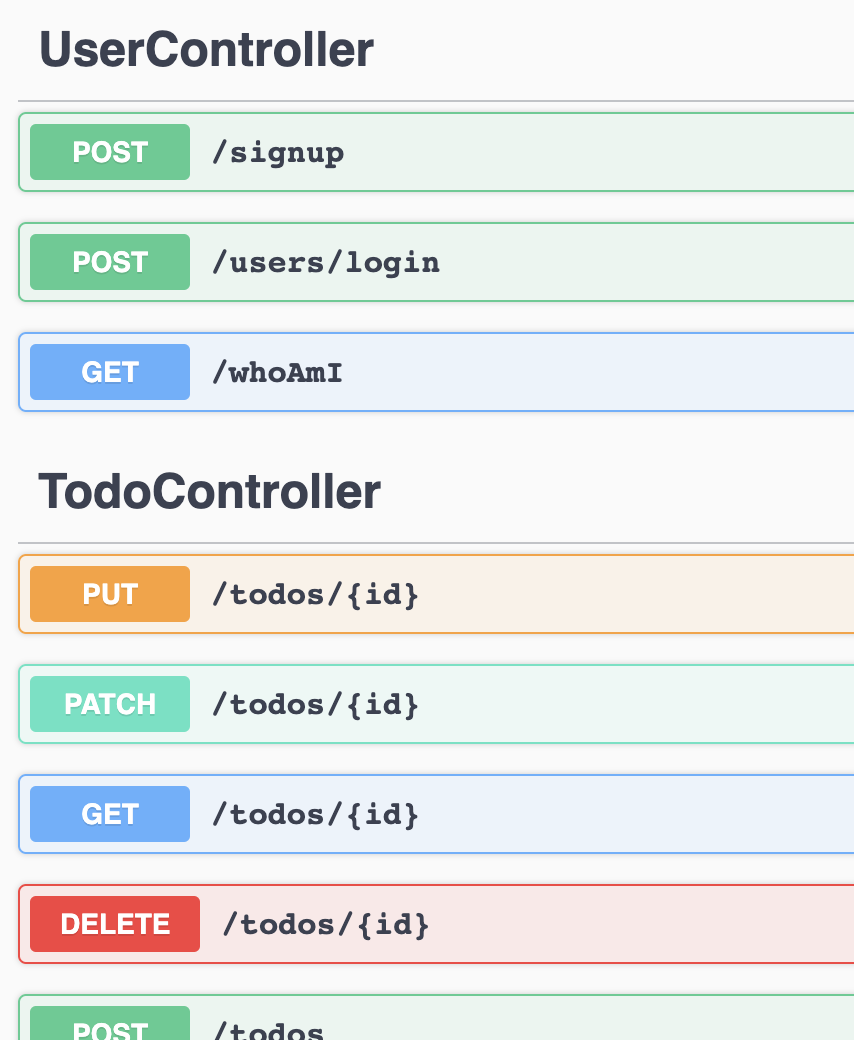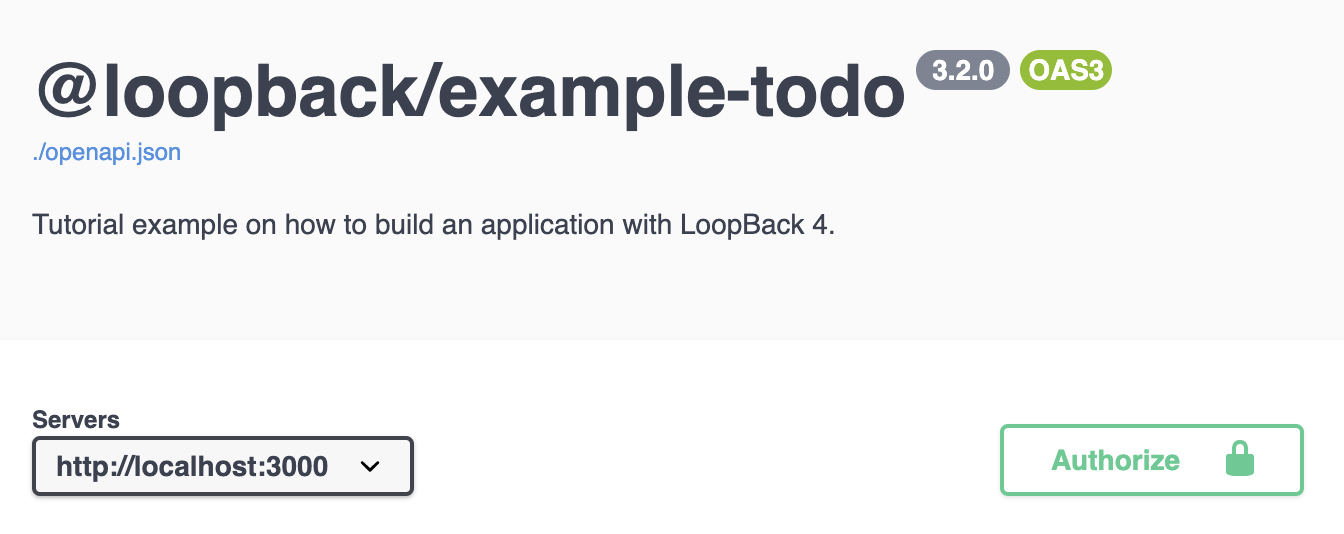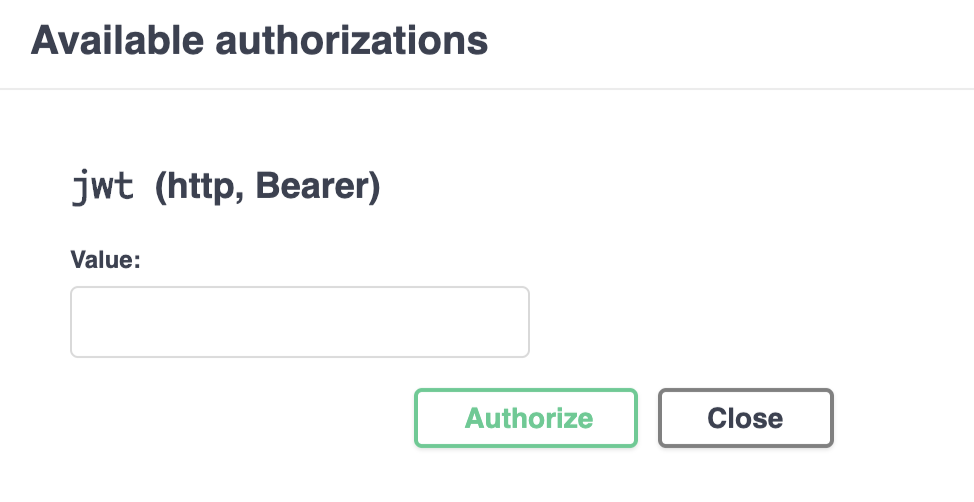@loopback/docs
Version:
Documentation files rendered at [https://loopback.io](https://loopback.io)
77 lines (49 loc) • 2.26 kB
Markdown
This is a modified LoopBack 4
[](https://github.com/loopbackio/loopback-next/tree/master/examples/todo)
with JWT authentication, using the `@loopback/authentication-jwt` extension.
This tutorial demonstrates how to add JWT authentication to the
[](https://github.com/loopbackio/loopback-next/tree/master/examples/todo).
Start the application by running npm start and go to
http://localhost:3000/explorer. You’ll see the 3 new endpoints under
`UserController` together with the other endpoints under `TodoController`.

1. Sign up using the/signup API
Since we don’t have any users created, click on `POST /signup`. For the
requestBody, the minimum you need is `email` and `password`. i.e.
```json
{
"email": "testuser2@abc.com",
"password": "testuser2"
}
```
2. Log in using thePOST /users/login API
After calling /users/login , the response body will look something like:
```json
{
"token": "aaaaaaaaa.aaaaaaaaaaaaaaaaa"
}
```
Copy the token. Go to the top of the API Explorer, click the “Authorize”
button.

Paste the token that you previously copied to the “Value” field and then
click Authorize.

In the future API calls, this token will be added to the `Authorization`
header .
3. Get all todos using `GET /todos` API You should be able to call this API
successfully.
- [Guidelines](https://github.com/loopbackio/loopback-next/blob/master/docs/CONTRIBUTING.md)
- [Join the team](https://github.com/loopbackio/loopback-next/issues/110)
Run `npm test` from the root folder.
See
[](https://github.com/loopbackio/loopback-next/graphs/contributors).
MIT
[-@2x.png>)](http://loopback.io/)